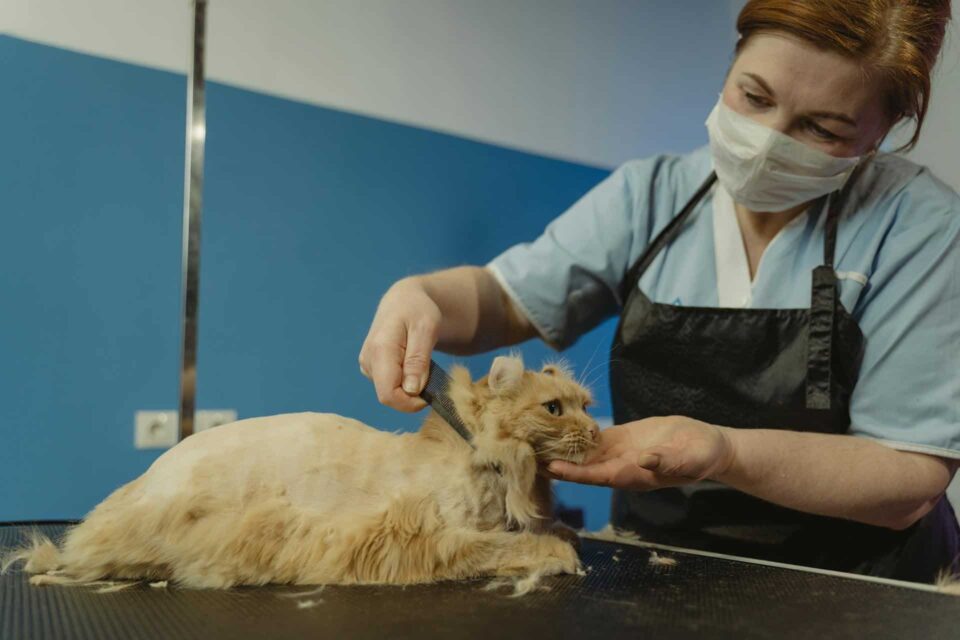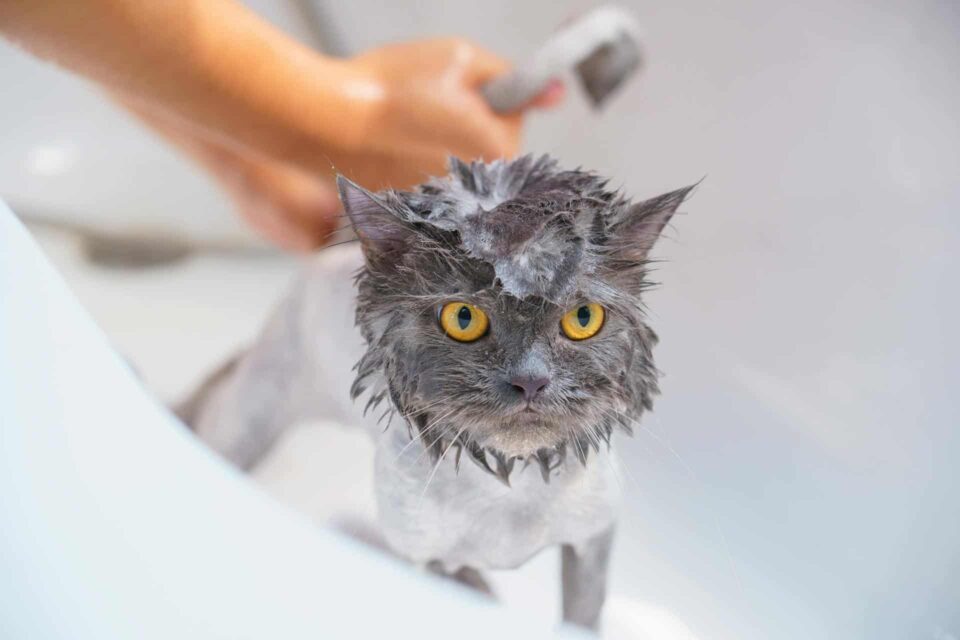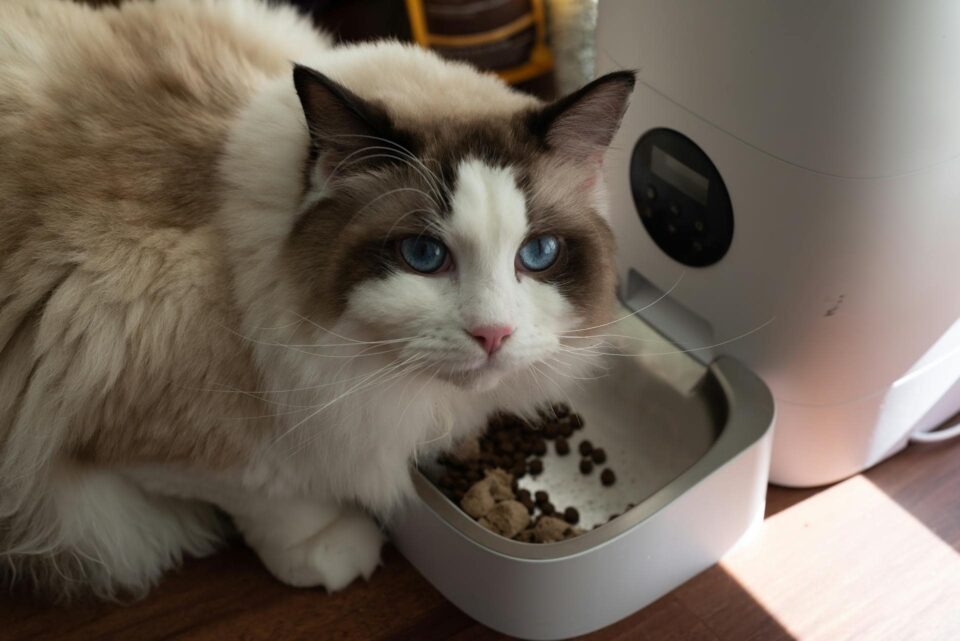How to Get Rid of Cat Dandruff
Cat dandruff can be both an aesthetic issue and a sign of underlying health problems. Addressing cat dandruff involves a combination of veterinary care, proper grooming, dietary adjustments, and sometimes, medicated treatments. This article will guide you through the steps to identify and treat the causes of cat dandruff, as well as provide tips for preventive measures and long-term care to keep your feline friend’s skin and coat healthy.
Key Takeaways
- Consulting a veterinarian is crucial to accurately diagnose and treat the underlying causes of cat dandruff, which may include parasites, infections, or dietary deficiencies.
- Regular grooming with the right tools and using a moisturizing or medicated shampoo can help manage and reduce dandruff, while dietary adjustments and supplements can support skin health.
- Preventive measures such as maintaining a balanced diet, consistent grooming, and monitoring for symptoms are essential for long-term dandruff control and overall feline wellbeing.

Identifying and Treating the Causes of Cat Dandruff
Consulting a Veterinarian for an Accurate Diagnosis
When you notice your cat exhibiting signs of dandruff, it’s crucial to seek immediate veterinary care. A veterinarian is not just a resource but your partner in ensuring your pet’s health. They can provide a proper diagnosis and help create a treatment plan tailored to your cat’s specific needs.
Remember, while home remedies might offer temporary relief, they are no substitute for professional advice. A vet can recommend suitable treatments, guide you through the process, and advise on potential side effects or interactions with other medications.
If your cat’s symptoms are severe or persistent, or if you observe excessive grooming, which can signal underlying issues like stress or medical problems, do not hesitate to consult with your vet. Identifying and addressing the root cause is essential for your cat’s well-being.
Addressing Parasites and Infections
Once your veterinarian has diagnosed your cat with a parasitic condition, such as mites, or a fungal, bacterial, or yeast infection, it’s crucial to begin treatment promptly. Parasites like fleas and ticks can be managed with specific control products that your vet will recommend. Similarly, infections may require medication like antifungals or antibiotics to tackle the root cause and alleviate your cat’s discomfort.
- Ensure you follow the prescribed treatment regimen closely.
- Keep your cat’s living environment clean to prevent reinfection.
- Monitor your cat for signs of improvement or any adverse reactions to the treatment.
Remember, addressing these issues not only helps in getting rid of dandruff but also contributes to your cat’s overall well-being. For additional support, consider using calming products like essential oils or special shampoos designed for sensitive skin, which can soothe your cat during this process. Explore our range of products at Gou Gou Pets for options tailored to your feline friend’s needs.
Dietary Adjustments and Supplements
To tackle cat dandruff, consider the power of dietary changes and the addition of supplements. Incorporating omega fatty acids into your cat’s diet is crucial for maintaining healthy skin and a lustrous coat. You can start by introducing hemp seed oil or other sources rich in omega 3 & 6, which are known to combat dryness and itchiness.
When selecting supplements, look for products that are non-GMO and allergen-free to ensure your cat’s safety. Begin with a small dosage and gradually increase as needed, but always consult your veterinarian before making any changes to your cat’s diet or introducing new supplements. This step is vital to prevent any adverse reactions and to tailor the supplement to your cat’s specific health needs.
Remember, while supplements can provide instant relief, they should complement a balanced diet rather than replace it. Keep an eye on your cat’s response to these dietary adjustments and consult your vet regularly to monitor their skin health.
Related: Your Guide to Perfecting Your Pet’s Skincare Routine

Regular Grooming and Appropriate Shampoos
Regular grooming is essential in managing your cat’s dandruff. Brushing your cat regularly helps distribute natural oils, remove loose hairs, and keep the skin free from dirt and dead cells. It’s important to select the right shampoo for your cat’s needs. Look for products that are free from harsh chemicals like sulfates, parabens, and phosphates, which can irritate your cat’s skin and exacerbate dandruff issues.
When choosing a shampoo, consider the following:
- Opt for a medicated shampoo if your cat has seborrhea or a similar skin condition.
- A gentle, deodorizing shampoo with natural ingredients can be a good choice for kittens or cats with sensitive skin.
- For a quick clean without the need for water, a leave-in conditioner spray can be a convenient option.
Remember, while grooming products like those from Gou Gou Pets offer holistic pet skin care solutions, it’s crucial to consult your veterinarian before starting any new grooming regimen, especially if your cat is experiencing dandruff.
Related: Things to Remember When Grooming Your Cat Holistically

Preventive Measures and Long-Term Care
Maintaining a Balanced Diet
Ensuring your cat enjoys a balanced diet is crucial in preventing dandruff. Incorporate a variety of seasonal fruits and vegetables into their meals to provide essential nutrients and fiber. Here are some steps to consider:
- Introduce healthy fats into their diet, such as those found in fish oil supplements, to support skin health and reduce dandruff.
- Limit foods that may contribute to yeast overgrowth, which can exacerbate skin issues.
Remember, a diet that’s rich in omega-3 fatty acids not only helps in managing dandruff but also promotes a lustrous coat. Consult with your veterinarian to tailor your cat’s diet to their specific needs, ensuring they receive all the necessary vitamins and minerals for optimal health.
Implementing a Consistent Grooming Routine
To keep your cat’s skin healthy and dandruff-free, establishing a consistent grooming routine is essential. Regular brushing not only removes dirt and loose fur but also distributes the natural oils throughout your cat’s coat, which can prevent dry, flaky skin. Start by selecting the right grooming tools that are suitable for your cat’s fur type.
In addition to brushing, consider incorporating a moisturizing pet shampoo into your cat’s bathing routine. This can help address the underlying cause of dry skin, as suggested by Vetster. Remember, it’s important to bathe your cat only as often as necessary, as over-bathing can strip away essential oils and exacerbate skin issues.
Lastly, keep an eye on your cat’s behavior. Excessive grooming can indicate stress or anxiety, which may lead to skin damage. If you notice any changes in your cat’s grooming habits or the condition of their skin, consult your veterinarian for advice.
Monitoring for Recurring Symptoms
Keeping a vigilant eye on your cat’s health is crucial, especially after treating dandruff. Monitor your cat for signs of dandruff returning, such as white flakes on their skin, fur, or bedding. This proactive approach allows you to catch and address any issues early on.
To effectively track your cat’s condition, consider the following steps:
- Regularly inspect your cat’s coat and skin for any signs of flakiness or redness.
- Observe your cat’s behavior for any indications of discomfort or excessive scratching, which could signal skin irritation.
- Maintain a log of your cat’s grooming habits and any changes in their environment that may affect their skin health.
By staying attentive to these details, you can ensure that your cat remains comfortable and dandruff-free. Remember, consistency is key in preventing the recurrence of symptoms. If you notice any persistent issues, don’t hesitate to consult your veterinarian for further guidance.
Related: How to Groom a Cat That Hates Bathing
Understanding the Importance of Veterinary Follow-Ups
After addressing your cat’s dandruff through various treatments, it’s essential to understand the role of veterinary follow-ups. These check-ins with your vet are not just a formality; they are a critical component of your cat’s long-term health care. During these visits, your vet can monitor the effectiveness of treatments and make necessary adjustments.
Regular follow-ups can catch potential issues early, preventing them from escalating into more serious conditions. It’s also an opportunity to discuss any concerns you may have about your cat’s health or behavior. Remember, symptomatic cat dandruff treatments such as special shampoos or topical treatments should only be used when directed by a veterinarian.
Always keep in mind that your vet is a valuable resource for information and support. They can provide guidance on how to maintain your cat’s skin and coat health, ensuring a happy and comfortable life for your feline friend.
Ensuring the long-term health and wellness of your beloved pets is paramount. At Gou Gou Pets, we embrace the power of holistic health, offering a range of products that cater to every aspect of your pet’s life, from joint and pain management to zen and wellness care. Our products are formulated with the wisdom of ancient Chinese philosophies, providing natural, chemical-free solutions for your pets. Take the first step towards a healthier, happier pet by visiting our website. Don’t forget to sign up for our email to receive 10% off your first purchase, and explore our holistic approach to pet care that’s as enduring as the Great Wall of China.
Embarking on a Cat Dandruff Care
Addressing cat dandruff involves a combination of dietary adjustments, regular grooming, and appropriate medical interventions. Ensuring your cat’s diet is rich in omega-3 fatty acids and possibly adding a fish oil supplement can significantly improve skin health. Regular brushing and the use of moisturizing cat shampoos are practical steps to manage dandruff at home. However, it’s crucial to consult with a veterinarian to identify the underlying cause, whether it’s parasites, allergies, or other health issues, and to receive a tailored treatment plan. Remember, while some dandruff is normal, persistent or severe cases require professional attention to prevent discomfort and maintain your cat’s well-being.
Related: How to Stop My Cat From Over Grooming?
~Veterinarian Recommended